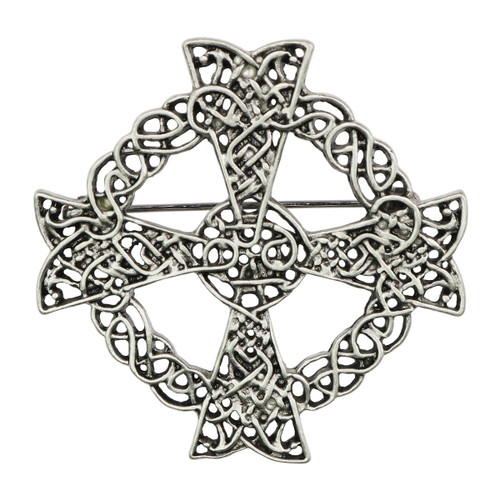Celtic Cross Pewter Plaid Brooch – Symbolic Highland Accessory
Embrace the deep spiritual symbolism of Celtic tradition with this Celtic Cross Pewter Plaid Brooch. This elegant accessory is the perfect way to secure your fly plaid while honoring both ancient pagan beliefs and early Christian heritage.
According to popular legend, the Celtic Cross was introduced by St. Patrick as he converted the Celts to Christianity, blending the Christian cross with the sun symbol from pagan traditions. Today, the cross is widely recognized as a symbol of life, nature, wisdom, and divine connection.
This brooch also features intricate Celtic knotwork, a hallmark of Celtic art symbolizing eternity, interconnectedness, and the cycles of life. These interwoven patterns have their roots in both pre-Christian and Christian Celtic design, appearing in ancient artifacts, illuminated manuscripts, and sacred artwork.
Measuring approximately 3.5 inches, this cast pewter brooch is sturdy, elegant, and timeless. Wear it with your Highland attire, formal kilt outfit, or Renaissance costume to proudly display your Celtic heritage.
Key Features:
-
Crafted from high-quality pewter for lasting durability
-
Features the Celtic Cross and traditional knotwork designs
-
Symbolizes the blend of Celtic spirituality and Christian faith
-
Measures approximately 3.5 inches in diameter
-
Perfect for fly plaids, shawls, cloaks, or Renaissance attire
-
A meaningful gift for anyone proud of their Celtic roots
Usually ships within 1-2 business days!








